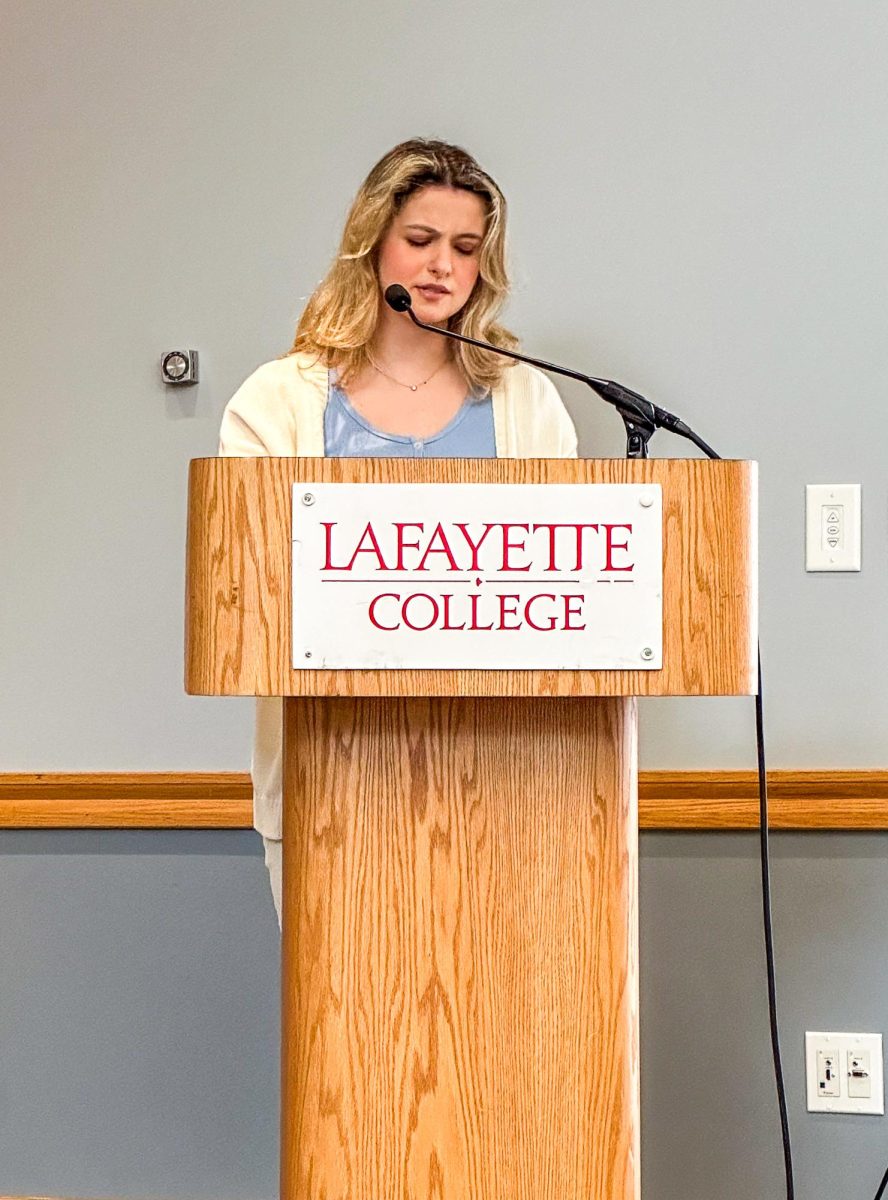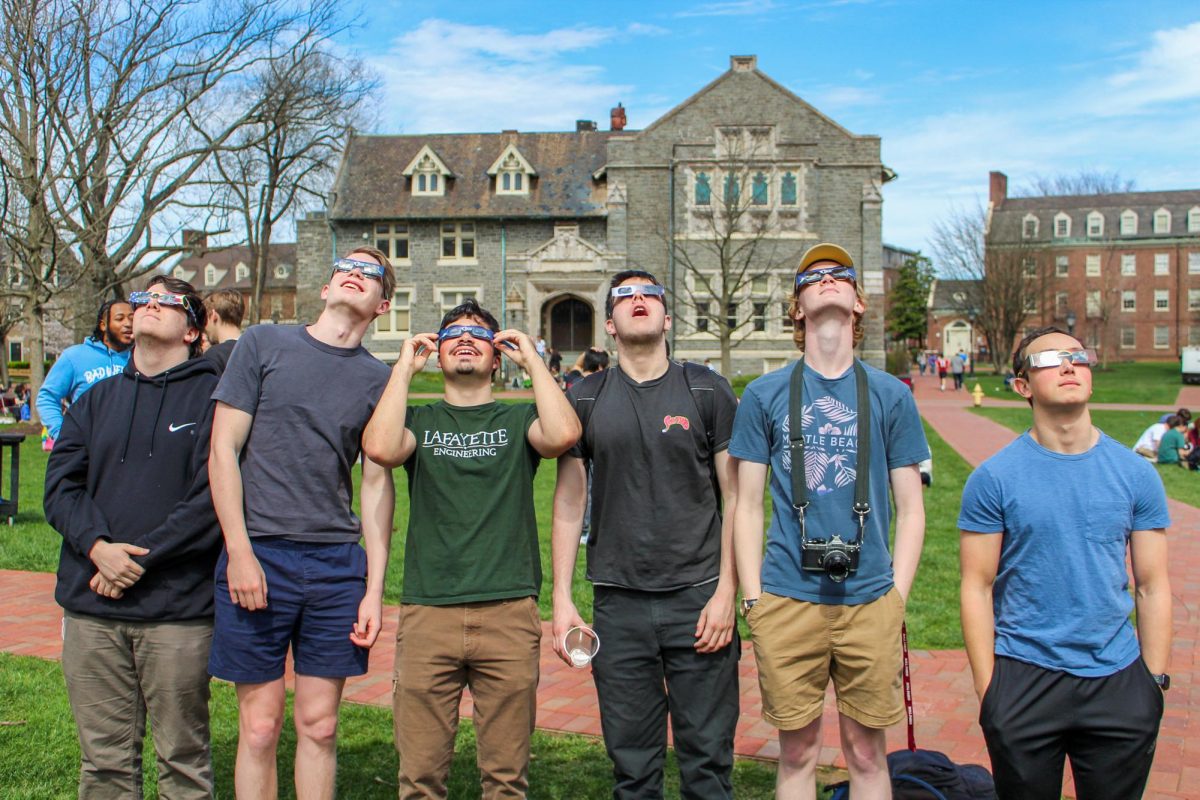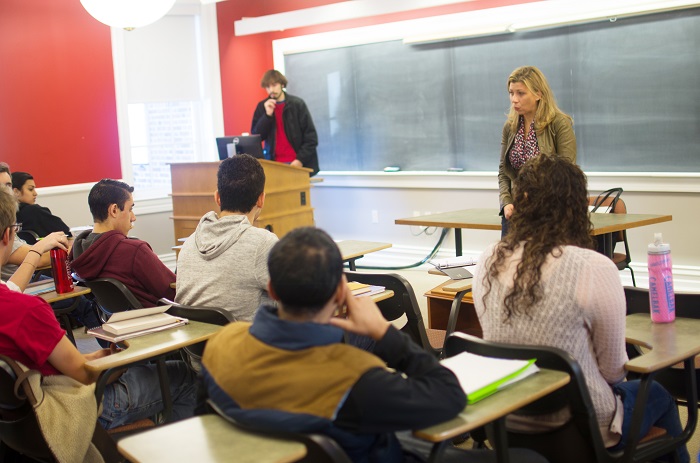With registration near, students frustrated with required courses
By Christina Shaman ‘16 and Kathryn Kelly ‘19
Collaborative Writers
A dean’s list double major in biology and German, Erin Kersten ’16 is headed toward a promising future when she graduates this spring.
But she still needs to fit in another core requirement: the GM1.
For those unfamiliar with Lafayette’s Global and Multicultural (GM1 and GM2) requirements, established in 2012, they are a continuing source of confusion, not only for students but for faculty. Some students find it hard to distinguish between the two, and GM2 seems to them easier to fulfill.
Often students put off taking the GM courses, which are required to graduate, until late in their Lafayette career. Then, it is a matter of too little choices too late.
“I’m sure it [the GM1 course] will be really interesting, but I’m forced to take it because I need to graduate with that GM1 requirement,” Kersten said. “It’s really frustrating.”
According to the Global and Multicultural approved rubric for 2014 on the Lafayette website, “Courses fulfilling GM1 should be focused primarily on dimensions of difference, which include but are not limited to race, gender, class, sexuality, or religion.”
GM1 courses must cover at least two dimensions of identity and difference, and are typically, but not always, explored within the context of the United States. GM2 courses on the other hand explore similar issues, but within a global frame.
The objective of a GM2 course is to “learn something about another part of the world in depth,” said Professor Paul Barclay, a faculty member of the subcommittee that wrote the GM1 and GM2 requirements.
While the requirements for GM1 and GM2 are outlined by the registrar, some students still find themselves confused about which classes fulfill each requirement and frustrated by the limited amount of courses available to them to complete this part of the common course of study.
“The way they designate the courses as GM1 or GM2 doesn’t make sense to me,” said Kersten. Kersten, who completed the GM2 requirement through her German language courses, said she finds the GM1 requirement more difficult to complete due to the nature of her major courses.
“It makes it really hard if you’re majoring in more than one subject or you have a major [in which] you have to take a lot of classes,” Kersten said. “I have very little wiggle room [in my schedule] so it is tough to get those [GM1] classes.”
Michael Mastria ‘16 agreed. As a biology major and Spanish minor, who is also on the pre-med track, Mastria decided to complete his common core requirements, including GM1, towards the end of his degree.
“I wanted to get all of my science courses that are requirements for medical school first,” Mastria said. “So I had to fit in a bunch of these science courses, math courses, physics courses first before I could even tackle the common course of study.”
According to some professors, student confusion over the differences between GM1 and GM2 echoes faculty confusion about which requirement to attribute to their courses.
“Differences have only become clear to faculty over the last couple years” said History Professor Joshua Sanborn. “[So] there is probably room for clarification among students.”
“Students might not be clear yet because I don’t think we’re quite there ourselves,” said Barclay, who acknowledged that the GM requirements are still in an implementation phase.
That is where the the CEP committee comes in. The role of committee, according to student member Renan Dincer ‘16, “is to educate professors on what these distinct require[ments] entail.” The committee, which is made up of faculty, student and staff, meets periodically to discuss and suggest appropriate changes to the common course of study, according to Registrar Francis Benginia.
Proposals are submitted to the CEP committee, and in their monthly meetings members vote both on adding new courses and adding attributes to current courses, said professor Jorge Torres, chair of the CEP committee.
Benginia sees the problem of students’ confusion as rooted in a lack of research. He believes if students read the definition of the Global and Multicultural requirements available online, much of the confusion surrounding the topic would dissipate.
Torres believes the same can be said for faculty.
“Unless the faculty read very closely what the requirements are for teaching those courses…then it could be confusing to faculty,” he said.
According toDincer, the wording of the GM requirements is intentionally vague, which leads to debate even among committee members.
The committee is in talks about ways to clarify the confusion between GM1 and GM2 requirements, saidDincer. They are also in the process of addressing other concerns including availability of GM courses.
“The registrar is aware that there are not enough GM1 and GM2’s, and that is something to be fixed,” Dincer said.
According to Dincer, courses can become GM1 or GM2 classes post-facto after review by CEP committee.
“All the courses are considered case-by-case [basis]”Dincer said. He added that the process by which courses are reviewed and changes are made is slow.
“These committees work very slowly,” Dincer said. “The reason they work slowly is part of the design of it because you don’t want drastic changes happening to everything [all at once].”









































































































